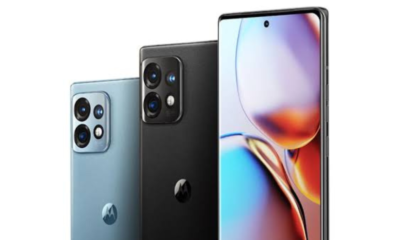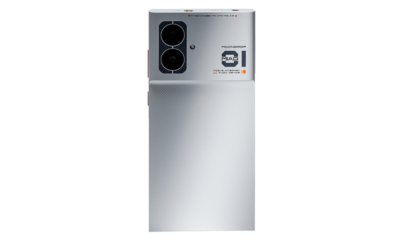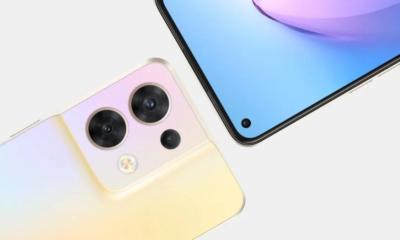Reviews
Google Pixel Fold Review.
Foldable technology has been around for a while, yet only Samsung has provided a line of them, the Galaxy Z Fold series. In Europe, there are a few extra selections, including the Honor Magic Vs and Huawei Mate X2, yet these models have been underwhelming. Ultimately, there are not many options to choose from. The Pixel Fold from Google is a noteworthy player in the foldable market, but it is not perfect; it has some drawbacks.
Design of the Google Pixel Fold
One of the standout features of the Google Pixel Fold is its design, which stands out when compared to other devices on the market. The Pixel Fold combines Gorilla Glass Victus for the folded front and back panels, a plastic material for the unfolded front, and an aluminium frame. Additionally, the device has an IPX8 water-resistance rating. The Pixel Fold, in contrast to the Samsung Galaxy Z Fold, appears more like a regular sized phone when shut due to its width and shortness. It has a 5.8-inch cover display, whereas the Galaxy Z Fold 4’s display is 6.2 inches.
When you open the Pixel Fold, it is easy to do so without too much resistance, but it won’t open by accident. Compared to the Z Fold 4, the Pixel Fold is much wider and squat looking when unfolded. Nevertheless, the inner display of both foldables is the same at 7.6-inches. However, it is important to consider that the Pixel Fold opens to landscape/horizontal orientation, as opposed to the Samsung Galaxy Z Fold 4 that opens to portrait/vertical orientation. This could affect the way certain apps appear.
One of the aspects I appreciate the most about the Pixel Fold is its small and wide size when closed. It has a 5.8-inch display like the iPhone X, making it quite easy to operate even with smaller hands, despite its thicker size compared to other phones.
Certainly, the Pixel Fold is thicker than most phones due to its folding design, being more like two phones stacked together. Google has designed the hinge to ensure the two halves appear flat and flush with no gap in between them; however, when inspected more thoroughly, a very small space is noticable. Compared to the Z Fold 4, which has a visible wedge-shaped gap that could allow dust and dirt to enter, the Pixel Fold offers a much better solution.
The volume and power buttons, which also accommodate the fingerprint sensor, are situated on the right side of the phone. The USB-C charging port and one of the two stereo speakers are both on the bottom edge, with the other speaker located on the top. During my testing, the fingerprint sensor was both quick and reliable.
The Pixel Fold measures 158.7mm by 139.7mm by 5.8mm when unfolded and 139.7mm by 79.5mm by 12.1mm when folded. The total weight is a substantial 283 grams, which is almost 10 ounces. Given that it is made of high-quality materials such as glass and aluminum, this heaviness can be expected. Despite this, I still experienced comfort when using it, even with one hand, although the back’s glass material makes it a bit slippery. I would suggest finding a good case for added security.
Google Pixel Fold Viewable Screens
The Google Pixel Fold has a 5.8-inch OLED display with a 1080 x 2092 resolution and a pixel density of 408ppi. It has a 17:4:9 aspect ratio and a 120Hz refresh rate. It has a typical brightness of 1200 nits and can reach 1550 nits at peak brightness. It is covered with Gorilla Glass Victus, though this is not the latest version, so it may not be the most durable. After some use, I have noticed a few minor micro scratches, so I would suggest using a screen protector.
The inner display is a 7.6-inch plastic foldable OLED panel with a resolution of 1840 x 2208 and 378 ppi, along with HDR10+ and brightness that can reach up to 1000 nits (or 1450 nits at its peak). This inner display opens up to a landscape/horizontal orientation, which affects how specific apps are viewed on the internal screen.
So far, in my evaluation, I am highly impressed with the general quality of the displays on the Pixel Fold. Visually, everything appears exact and sharp on both the external display and the internal screen, and the hues are strong and dynamic. Even though the maximum brightness isn’t quite as bright as the iPhone 14 pro that I’m familiar with, it still functions well in direct sunlight outside. Nevertheless, the inner screen is quite reflective, making it difficult to use when the sunlight is particularly intense.
Both the cover display and the interior screen possess a 120Hz refresh rate, making the experience exceptionally pleasant. Scrolling, animations, and the transition between apps are all ultra-smooth, and the responsiveness is excellent.
The selfie camera on the cover display of the Pixel 7 devices is situated in a hole-punch cutout. Its use is not just limited to taking selfies, but also for Face Unlock. The inner display, however, has a thicker bezel, thus the front-facing camera is concealed in the bezel at the right side. Unfortunately, Face Unlock is not supported by the inner camera.
I must say I’m quite pleased with the screens on the Google Pixel Fold. My only complaint is that the crease can be seen, usually against darker backgrounds. Fortunately, the crease isn’t too invasive when using lighter webpages and apps. With more use, you become accustomed to it, similar to what I experienced with the iPhone notch.
Durability of the Google Pixel Fold
Since the Google Pixel Fold is now out in the wild, there have been rumour about the device’s durability. One user has reported that the inner screen guard was starting to peel off on their Pixel Fold. Other customers have observed broken pixels aligned across the inner display, with some also mentioning small dents and surface blemishes near the bezels.
I have personally encountered an odd click/pop sound when I open up my Google Pixel Fold to access the inner display. Though the sound dissipates when I open the device in rapid succession, I have nonetheless sent the unit back to Google for further investigation. I am now using a new Pixel Fold and if the sound reappears or any other issues arise, I shall update this review and inform you of the details.
The Performance and Software Capabilities of the Google Pixel Fold
For the Google Pixel Fold, the Google Tensor G2 chipset, 12GB of RAM, and 256GB or 512GB UFS 3.1 storage is included. The review model I was sent was the 256GB option. Regrettably, there is no microSD card slot; the capacity you pick is what remains.
As far as software is concerned, the Pixel Fold will come pre-installed with Android 13 (now updated to Android 14). While Google has not confirmed exactly what kind of software updates the device will receive, it is expected to get the same three version upgrades and five years of security patches as the other Pixel products.
During the Google I/O 2023 keynote, Google highlighted many features of the Pixel Fold, however, some of these won’t be available until Android 14 is released. Specifically, the dual-screen interpreter mode which allows both the inner and outer displays to be used for translating live conversations but will not be accessible until then.
When I tested the Pixel Fold, it functioned very efficiently. Apps opened up promptly, transitioning between them was quick, and all activities occurred smoothly without any hiccups. During my usage, I did not experience any delays or stuttering and there were no crashes when using apps. The fingerprint scanner was highly reliable most of the time, with a success rate of 99% (I had not encountered the same accuracy with the Pixel 7).
I rely on the Pixel Fold for my regular responsibilities, including monitoring Microsoft Outlook and Teams for business and Gmail and Spark for personal messages, engaging with Instagram and Facebook, streaming music on Apple Music and videos on Disney+, capturing countless pictures of my very energetic kid and other fun activities, and uploading them to the Family Album app. Throughout the day, I find myself turning to the Pixel Fold for my tasks and it does not disappoint.
Google has tailored most of its own applications to exploit the extra viewing area of the Pixel Fold when it is opened up and made into a tablet.
When an app does not offer support for the larger display, it can appear unattractive, either it appears in the inner display taking up only half of the space or with two black bars surrounding it. However, in some cases, it is possible to enhance the look of the app by turning the device around. Rotating it 90 degrees will fill up the screen when it is in the vertical orientation. The reason for this could be that the app developers have yet to optimize it. Hopefully this will improve in the future. For now, if an app does not look good in the inner display, I use it on the cover display instead.
The Google Pixel Fold offers a great multitasking experience, with its taskbar and split-screen features on the inner display feeling quite natural and intuitive, similar to iPodOS. To access the taskbar, one needs only to do a slow swipe from the bottom of the screen while inside an app, and all apps can be accessed from there. To activate split-screen, just drag and drop an app icon into the desired area of the screen.
The software provided by the Pixel Fold is very easy to use and comprehend. When in split-screen, the windows can be resized by manipulating the middle vertical bar. Apps can be combined together (e.g. Chrome and Gmail) and the panels can be switched by double-tapping the separator. This is a familiar concept for those who use iPads. However, on the Pixel Fold only two apps can be active at any one time. Those who require more than two apps running simultaneously should consider the Galaxy Z Fold as it allows for more than two apps to be open.
Using the Pixel Fold has a lot of advantages, especially its Tabletop mode. This allows you to open the device up to a 90-degree angle and use it just like a laptop on a flat surface. You can use it to watch videos, take selfies, make video calls, and more. Plus, you can also use the Tent mode to view the cover display. All of this adds a lot of extra versatility.
Cameras on the Google Pixel Fold
I have noticed that all Pixel phones are capable of capturing impressive shots, and the Pixel Fold is no exception.
The Google Pixel Fold has been equipped with a top-notch triple-lens camera setup at the back. Its main camera is a 48-megapixel shooter with dual-pixel phase detection autofocus (PDAF), laser autofocus (AF), and optical image stabilization (OIS). Additionally, there is a 10.8MP telephoto lens that offers dual-pixel PDAF, OIS, and 5x optical zoom. Furthermore, the 10.8MP ultrawide lens provides a 121-degree field of view (FOV).
For taking selfies, there are two cameras provided, one on the cover display with 9.5MP, and one on the inner display with 8MP. It is more probable to use the cover display for selfies, because it has a higher megapixel count. An alternative is to use Rear Camera Selfie mode, which provides access to both the cover display and rear camera (when unfolded) for selfies with higher resolution.
The Pixel Fold’s rear camera can capture 4K footage at 30 or 60 fps, or 1080p at 30, 60, 120, or 240 fps. Its front-facing cameras have a more limited range, allowing 4K recording at 30 or 60 fps, or 1080p at 30 or 60 fps.
I have been really enjoying the Google Pixel Fold’s cameras. I have given each lens a try and the results are good. As I have previously mentioned, I have had nothing but positive experiences with the Pixel cameras; they are reliable and the images usually come out with lively colours that are not too strong (unless it’s a very sunny day). My photographs still retain a lot of detail and texture, even when I take selfies with the front display, as well as telephoto and ultrawide shots.
I frequently take pictures in Portrait mode, but there have been some issues with the Pixel Fold. If there is not a lot of movement in the background, then the edge detection works as intended. However, when there is a busy atmosphere behind me, the software-based edge detection can be a bit unreliable, as I have observed jagged edges in my hair when standing in front of the rose garden arches. In other Portrait selfies, though, the results have been better, producing a natural bokeh effect in the background with smoother edges around my hair.
The Google Pixel Fold produces exceptional images with minimal effort, similar to its other Pixel counterparts. Also, with the integration of rear camera selfies and Tabletop mode, taking pictures with the Pixel Fold is further enhanced.
My testing has revealed that the Pixel Fold is quite competitive when it comes to how it stacks up against the camera of the Samsung Galaxy Z Fold 4.
Battery and Charging for the Google Pixel Fold
The battery of the Google Pixel Fold is 4,821mAh in size, which is a bit less than the 5,000mAh one found in the Pixel 7 Pro. My Google Pixel Fold has a life expectancy comparable to that of my iPhone 14 Pro.
For the past week, I have been assessing the Pixel Fold and have noticed that if the phone is heavily used, the battery will dwindle to 20 to 30% by day’s end, starting from a full charge. My activities included checking my emails and messages, browsing social media, streaming films and music, web surfing and taking a copious amount of photos and videos.
Whenever I have the opportunity, I like to use the Google Pixel Fold instead of my iPhone 14 Pro, especially for taking pictures. Sadly, despite the Pixel Fold having a bigger battery, the battery life is on par with that of the iPhone 14 Pro.
As indicated in Google’s instructions, the Pixel Fold is an all-day phone, but you can make it last for three days if you use the Extreme Battery Saver feature. A USB-C cable is the only thing provided in the package, and you need to purchase a power adapter separately. It is capable of a maximum of 30-watt fast-charging speeds, and based on my experience, I typically plug it in when it’s at about 20%, and it takes around 90 minutes to get to a full charge.
Qi-compatible charging pads are compatible with the Pixel Fold, but only up to 7.5W, which is a relatively low speed. Therefore, I’m not likely to switch to wireless charging due to its slowness.
For a device that is priced at a whopping $1,799, it is disheartening that the Pixel Fold has a slow wireless charging rate. To make matters worse, this phone does not offer reverse wireless Battery Share charging, a feature available on the Pixel 7 and Pixel 7 Pro.
Evaluating the Google Pixel Fold: An Overview
I am greatly pleased with my Google Pixel Fold, except for the occasional problems with apps on the inner display. If I was considering leaving the Apple ecosystem altogether, the Google Pixel Fold would be the device I would switch to.
I find the 5.8-inch size of the cover display ideal for me since it feels like a regular phone and can even be used with a single hand. This size also fits comfortably in my pockets and bags. Whenever I want a bigger display, I just have to open the device to bring out the 7.6-inch inner screen which is quite similar to an iPad mini. It serves as a great mini tablet for reading, watching and even getting work done when I’m on the go. Opening the device is also not a challenge; it may not be a one-handed task like a flip phone but still quite easy and enjoyable. I like the fact that there’s barely any gap between the two halves when closed, making it easier to manage dust and dirt.
The visuals of the displays are truly stunning with vivid colors that don’t overpower the eyes. Motion is buttery smooth due to the 120Hz refresh rate and the Tensor G2 chip by Google is incredibly fast and responsive. However, there is a slight downside of the battery life not lasting more than a day and the occasional overheating issues that Google has yet to address.
Using the Google Pixel Fold for multitasking is effortless. I found the split-screen mode to be similar to iPadOS, making it instinctive to use. The additional features such as tabletop mode and reverse camera selfies are advantageous for both entertainment and taking pictures.
Google’s first venture into the foldable sector is a good start, but it is far from being perfect. I feel the cover display should use something far more durable like Gorilla Glass Victus 2. After only a few days of use, I found a few micro scratches in the display, which is not ideal for a phone of this price. I would also like to see better power efficiency from the Tensor G2 chip, as it tends to get quite hot when running multiple apps or when in use for a long time. Furthermore, the 5,000mAh battery should be capable of lasting more than one day.
The experience with certain apps on the inner display is erratic. It takes a bit of effort to get them to run by rotating the device, but still it’s only usable on the cover display. The Fold 5 comes with a triple-lens camera system that has a 50MP main lens, a 10MP telephoto with 3x optical zoom, and a 12MP ultrawide. Nevertheless, the inner camera only has 4MP and the cover display is equipped with a 10MP camera. Additionally, its battery capacity is lower at 4,400mAh. On the other hand, it offers better multitasking capabilities by allowing more than two apps to be open simultaneously, which may be beneficial for those seeking to be more productive.
The Pixel Fold might have been problematic, but it is not. As the competition increases, it is difficult to convince buyers; however, if you want a Pixel device in a foldable shape, then the Pixel Fold is the only choice. It is not ideal, but it is an encouraging first step for Google’s foldable journey.
Positives
- Durable construction
- Impressive cover display dimensions
- Virtually no space between when shut
- Gorgeous visuals
- Incredible cameras
- Quick operation
Drawbacks
- Easily conceal display scratches
- Battery lasts for 24 hours
- Limited wireless charging options
Reviews
Xiaomi Pad 6S Pro 12.4 Review

Xiaomi continues to push boundaries in the realm of technology with its latest release, the Xiaomi Pad 6S Pro 12.4. Announced on February 22, 2024, this cutting-edge tablet boasts an array of features that promise to elevate the user experience to new heights.
Design and Display
The Xiaomi Pad 6S Pro 12.4 showcases a sleek and sophisticated design, with dimensions measuring 278.7 x 191.6 x 6.3 mm and a weight of 590g. Its build includes a durable combination of Gorilla Glass 5 on the front, an aluminum frame, and an aluminum back. The device also offers stylus support, making it ideal for creative professionals and note-takers.
Featuring a stunning 12.4-inch IPS LCD display with 144Hz refresh rate, HDR10, and Dolby Vision support, the Xiaomi Pad 6S Pro delivers vibrant colors and immersive visuals. With a resolution of 2032 x 3048 pixels and a peak brightness of 900 nits, every detail comes to life with clarity and precision.
Performance and Hardware
Under the hood, the Xiaomi Pad 6S Pro is powered by the latest Android 14 operating system, coupled with HyperOS for seamless multitasking and enhanced performance. It houses the Qualcomm Snapdragon 8 Gen 2 chipset, built on a 4nm process, ensuring lightning-fast speed and efficiency.
Equipped with an octa-core CPU and Adreno 740 GPU, this tablet delivers exceptional performance for gaming, productivity, and multimedia tasks. Users can choose from multiple configurations, including options with up to 1TB of storage and 16GB of RAM, providing ample space for apps, games, and media files.
Camera and Audio
The Xiaomi Pad 6S Pro features a dual-camera setup on the rear, comprising a 50MP wide lens and a 2MP depth sensor, capable of capturing stunning images and videos in various lighting conditions. On the front, a 32MP wide selfie camera ensures crisp and clear video calls and selfies.
In the audio department, the tablet comes equipped with stereo speakers, delivering immersive sound quality for multimedia consumption. With support for 24-bit/192kHz Hi-Res audio and Hi-Res Wireless audio, users can enjoy an enhanced listening experience with rich, detailed sound.
Connectivity and Battery
Connectivity options on the Xiaomi Pad 6S Pro include Wi-Fi 802.11 a/b/g/n/a/6/7, Bluetooth 5.3, NFC for file transfer, and a USB Type-C 3.2 port for charging and data transfer. The tablet also features a side-mounted fingerprint sensor for added security and convenience.
One of the standout features of the Xiaomi Pad 6S Pro is its massive 10,000mAh battery, providing long-lasting power for extended usage sessions. With support for 120W wired charging, users can recharge their device quickly, with advertised charging times of 45% in just 10 minutes and 100% in 35 minutes.
Price and Availability
The Xiaomi Pad 6S Pro is available in a range of attractive colors, including Black, Blue, and Green, catering to different style preferences. With a price tag of approximately 700 EUR, this tablet offers exceptional value for money, combining premium design, powerful performance, and innovative features.
Reviews
Nokia 235 4G Review
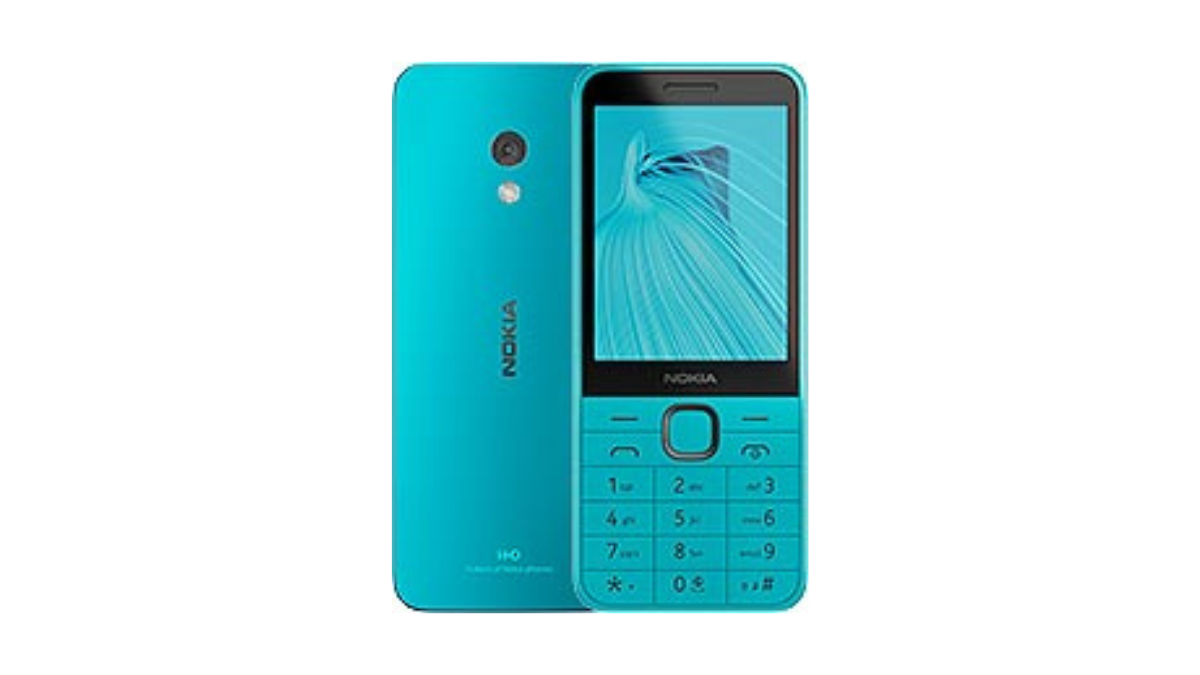
Nokia, a renowned name in the realm of mobile technology, has unveiled its latest offering, the Nokia 235 4G, set to hit the markets in May 2024. This compact device boasts a blend of simplicity and functionality, catering to users seeking reliability and affordability in their mobile experience.
Design and Display
The Nokia 235 4G sports a minimalist design with dimensions yet to be disclosed. Its dual SIM capability, supporting Nano-SIM cards on dual standby mode, ensures connectivity without compromise. The device features a 2.8-inch TFT LCD display, offering a modest resolution of 240 x 320 pixels and a 4:3 aspect ratio, yielding approximately 143 pixels per inch. While not pushing the boundaries of display technology, the Nokia 235 4G provides a sufficient viewing experience for its target audience.
Performance and Memory
Under the hood, the Nokia 235 4G is powered by the Unisoc T107 chipset, fabricated on a 22-nanometer process. Its 1.0 GHz Cortex-A7 CPU delivers adequate performance for everyday tasks, promising smooth operation. With a modest 64MB of RAM and 128MB of internal storage, expandable via microSDHC card slot, users can store essential apps, media, and files without constraints.
Camera and Audio
Equipped with a 2MP rear camera featuring an LED flash, the Nokia 235 4G enables users to capture moments on the go. While not designed for professional photography, this camera setup suffices for casual snapshots and basic imaging needs. Additionally, the device includes a loudspeaker and a 3.5mm audio jack, ensuring decent audio output for multimedia consumption and communication purposes.
Connectivity and Features
In terms of connectivity, the Nokia 235 4G lacks Wi-Fi capability but compensates with Bluetooth 5.0 support for seamless wireless communication. While devoid of advanced sensors and positioning features, the device supports essential functionalities such as SMS messaging and basic gaming. Users can also enjoy their favorite tunes via the built-in MP3 player and access cloud-based applications through the Cloud Apps portal.
Battery and Miscellaneous
Powering the Nokia 235 4G is a removable 1450mAh Li-Ion battery, offering adequate longevity for typical daily usage. Available in classic color options including Black, Blue, and Purple, the device presents a choice to match diverse preferences.
In summary, the Nokia 235 4G embodies Nokia’s commitment to delivering reliable mobile solutions tailored to the needs of budget-conscious consumers. With its modest specifications and emphasis on essential features, this device aims to provide a straightforward and dependable mobile experience without breaking the bank. While not groundbreaking in terms of innovation, the Nokia 235 4G serves as a viable option for users seeking a no-frills communication device with a touch of Nokia’s renowned durability and craftsmanship.
Reviews
Infinix Note 40 Pro+ Review
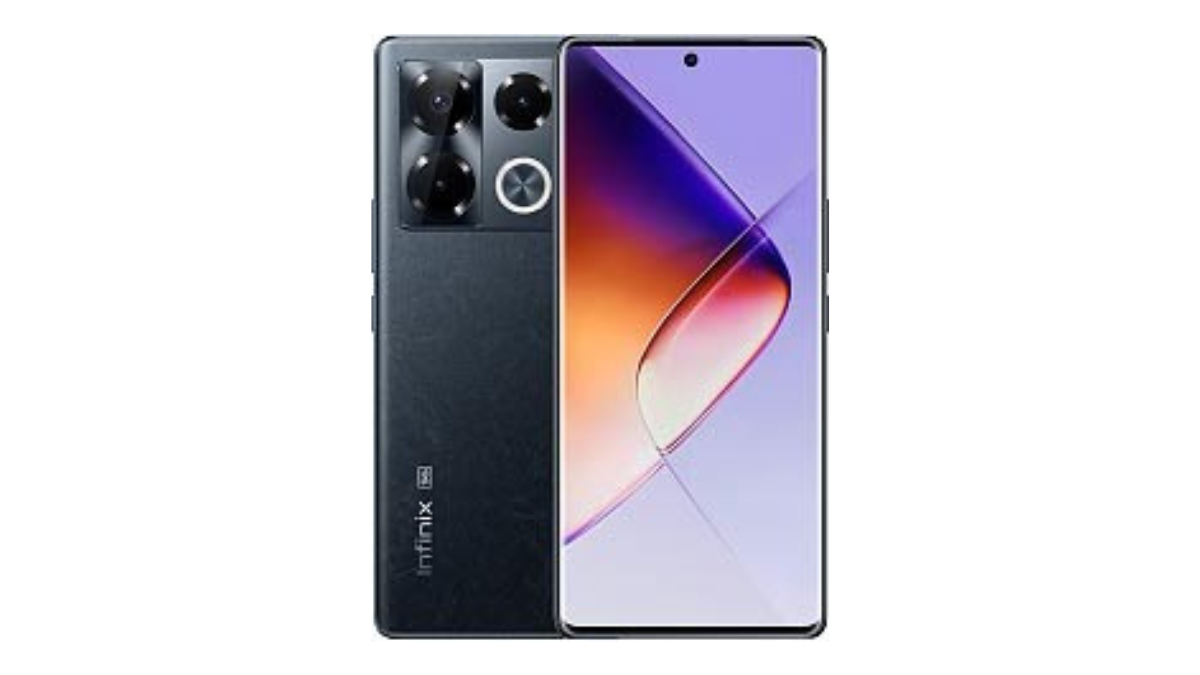
Infinix has unveiled its latest flagship device, the Infinix Note 40 Pro+, setting a new standard for connectivity and performance in the smartphone market. With an extensive range of network capabilities and advanced features, this device promises to redefine the mobile experience for users worldwide.
Connectivity Beyond Limits
The Infinix Note 40 Pro+ supports a comprehensive range of network technologies, including GSM, HSPA, LTE, and 5G. With support for multiple frequency bands across 2G, 3G, 4G, and 5G networks, users can enjoy seamless connectivity regardless of their location. Whether it’s streaming high-definition content, engaging in video calls, or downloading large files, the Note 40 Pro+ ensures lightning-fast speeds and reliable connectivity.
Cutting-Edge Specifications
Powered by Android 14 and XOS 14, the Infinix Note 40 Pro+ combines the latest software innovations with powerful hardware components. Equipped with a MediaTek Dimensity 7020 chipset and an octa-core CPU, this device delivers exceptional performance for multitasking, gaming, and multimedia consumption. With 12GB of RAM and 256GB of internal storage, users can enjoy ample space for their apps, games, photos, and videos.
Immersive Display and Audio
Featuring a stunning 6.78-inch AMOLED display with a 120Hz refresh rate and Corning Gorilla Glass protection, the Note 40 Pro+ offers an immersive viewing experience with vibrant colors and sharp detail. With a peak brightness of 1300 nits, users can enjoy clear visibility even in bright outdoor conditions. Moreover, the device is equipped with stereo speakers tuned by JBL, delivering rich, immersive sound for an unparalleled audio experience.
Capture Every Moment
The Infinix Note 40 Pro+ is equipped with a versatile triple camera setup, including a 108MP main camera, along with two 2MP auxiliary cameras. Whether it’s capturing breathtaking landscapes, detailed close-ups, or stunning portraits, users can expect exceptional clarity and detail in every shot. On the front, a 32MP selfie camera ensures stunning self-portraits and video calls, even in low-light conditions.
Innovative Features
In addition to its impressive specifications, the Infinix Note 40 Pro+ boasts a range of innovative features designed to enhance the user experience. With IP53 dust and splash resistance, users can rest assured that their device is protected against the elements. Moreover, the device supports advanced charging technologies, including 100W wired charging and 20W wireless MagCharge, ensuring fast and efficient charging on the go.
Unmatched Value
Available in two stunning colors, Obsidian Black and Vintage Green, the Infinix Note 40 Pro+ offers unmatched value for money. With its premium design, cutting-edge features, and competitive pricing, this device is poised to become a favorite among tech enthusiasts and casual users alike.
In summary, the Infinix Note 40 Pro+ redefines the smartphone experience with its advanced connectivity, powerful performance, and innovative features. Whether it’s for work, entertainment, or photography, this device delivers a truly immersive and seamless user experience, setting a new benchmark for smartphones in its class.
-
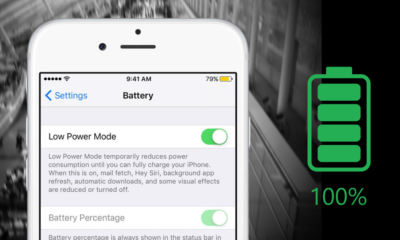
 How To8 months ago
How To8 months agoHow To Make Your Battery Last Longer On Your Gadget
-

 How To6 months ago
How To6 months agoHow To Use Voice Commands for Hands-Free Control.
-

 How To6 months ago
How To6 months agoHow To Unlock Your Smartphone If You Forget the PIN
-
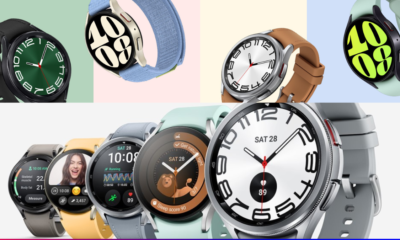
 Reviews9 months ago
Reviews9 months agoSamsung Galaxy Watch 6 vs. Galaxy Watch 6 Classic: A Timeless Face-off!
-
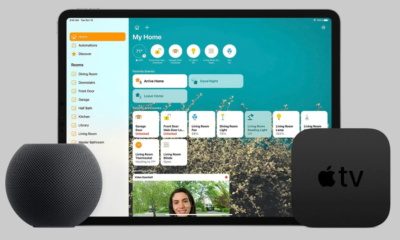
 Best Smart Home Gadgets7 months ago
Best Smart Home Gadgets7 months agoHow To Set Up a Smart Home: A Comprehensive Guide
-
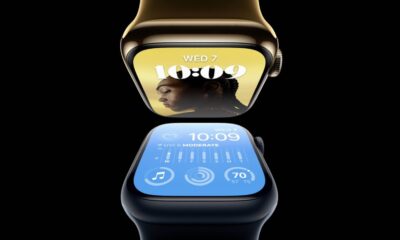
 Tech News9 months ago
Tech News9 months agoGurman: Apple Watch Redesigned ‘Apple Watch X’
-
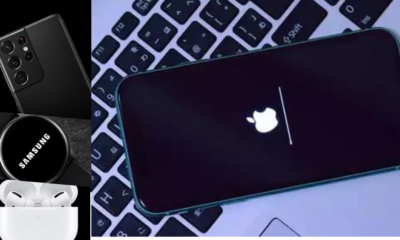
 How To6 months ago
How To6 months agoHow to Troubleshoot Common Gadget Problems
-

 Apps9 months ago
Apps9 months agoPhoto Magic: How To Use Quick Crop on iPhone Photos App iOS 17

